Abstract
The mean isolation rates of salmonellas from the mesenteric lymph nodes and faeces of healthy mink were 16·7% of 618 animals from three farms and 3·9% of 772 animals from four farms respectively. Salmonella senftenberg was the most commonly isolated serotype. S. typhimurium, S. dublin, S. livingstone, S. menston, S. enteritidis, S. bredeney and S. infantis were also seen.
The prevalence of salmonellosis in 316 dead mink from 12 farms was 0·6%.
The epidemiological aspects are discussed.
Full text
PDF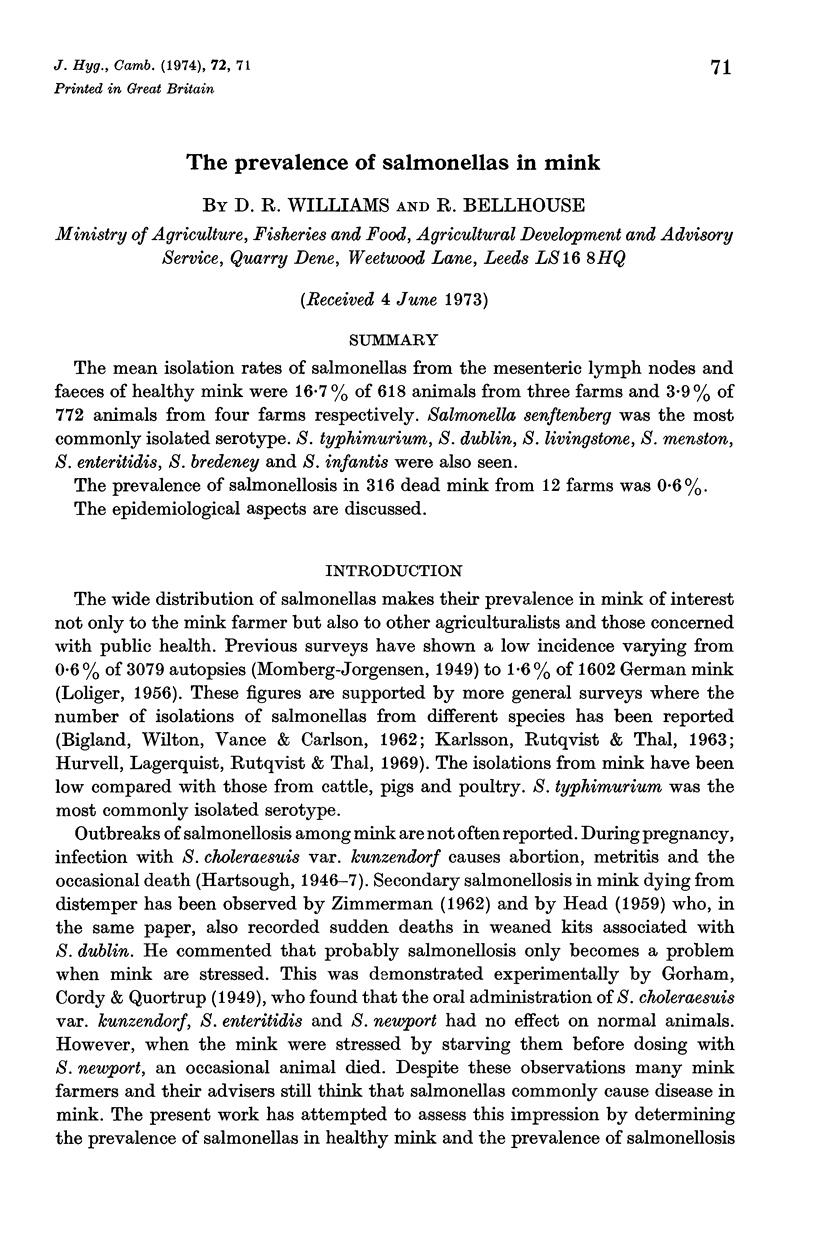
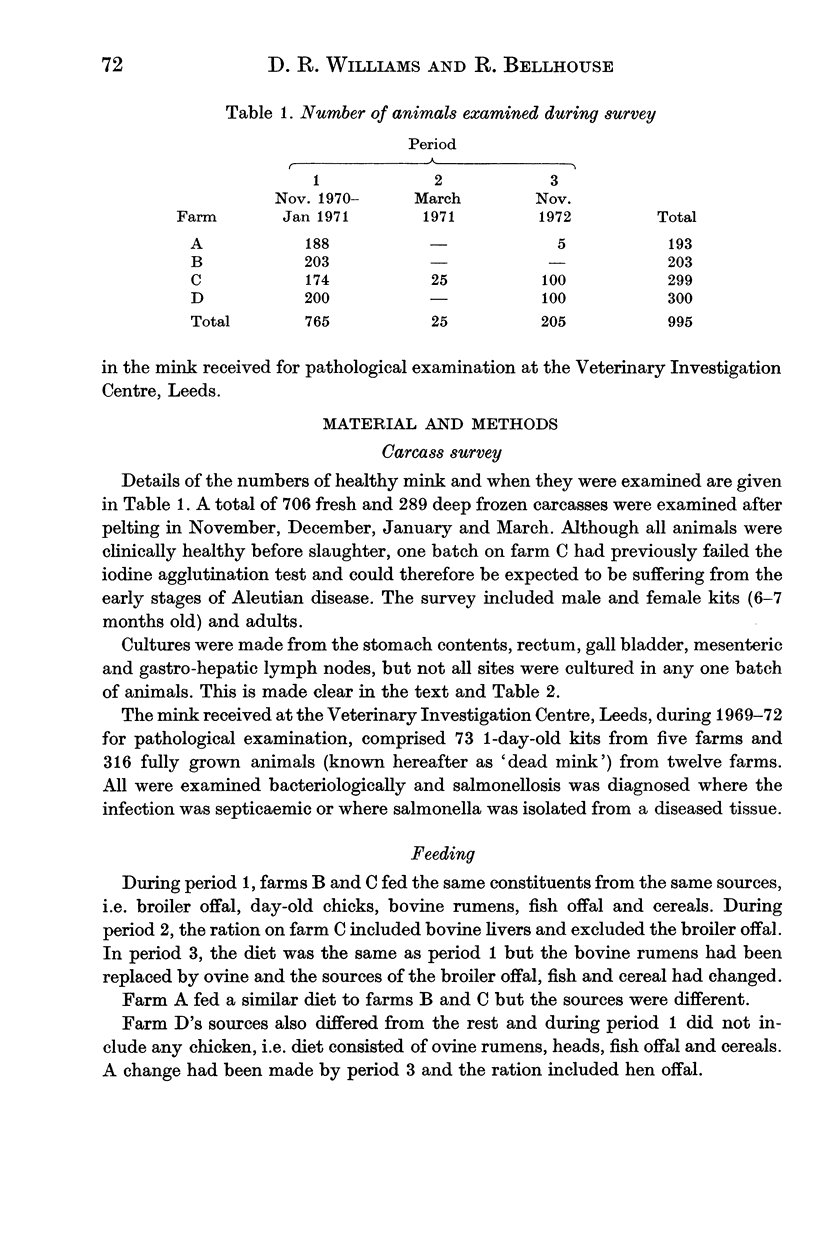

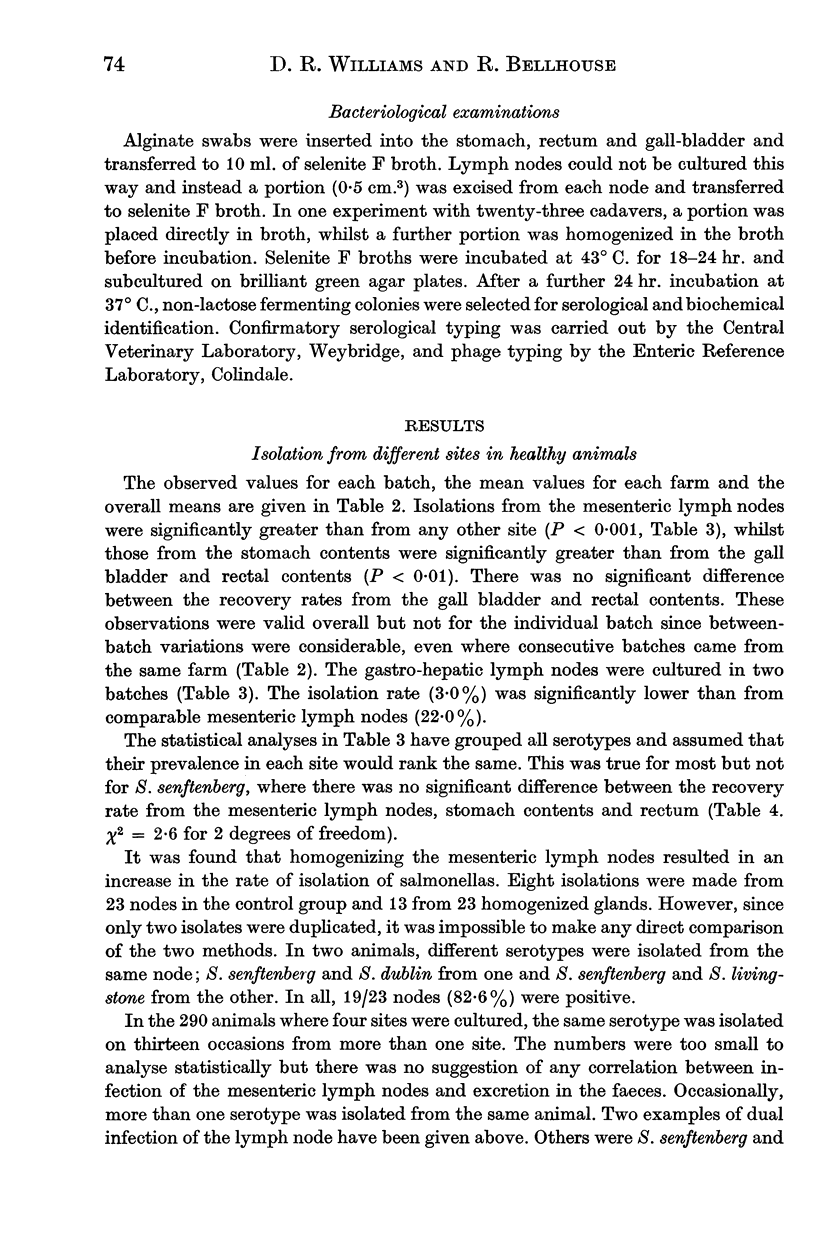
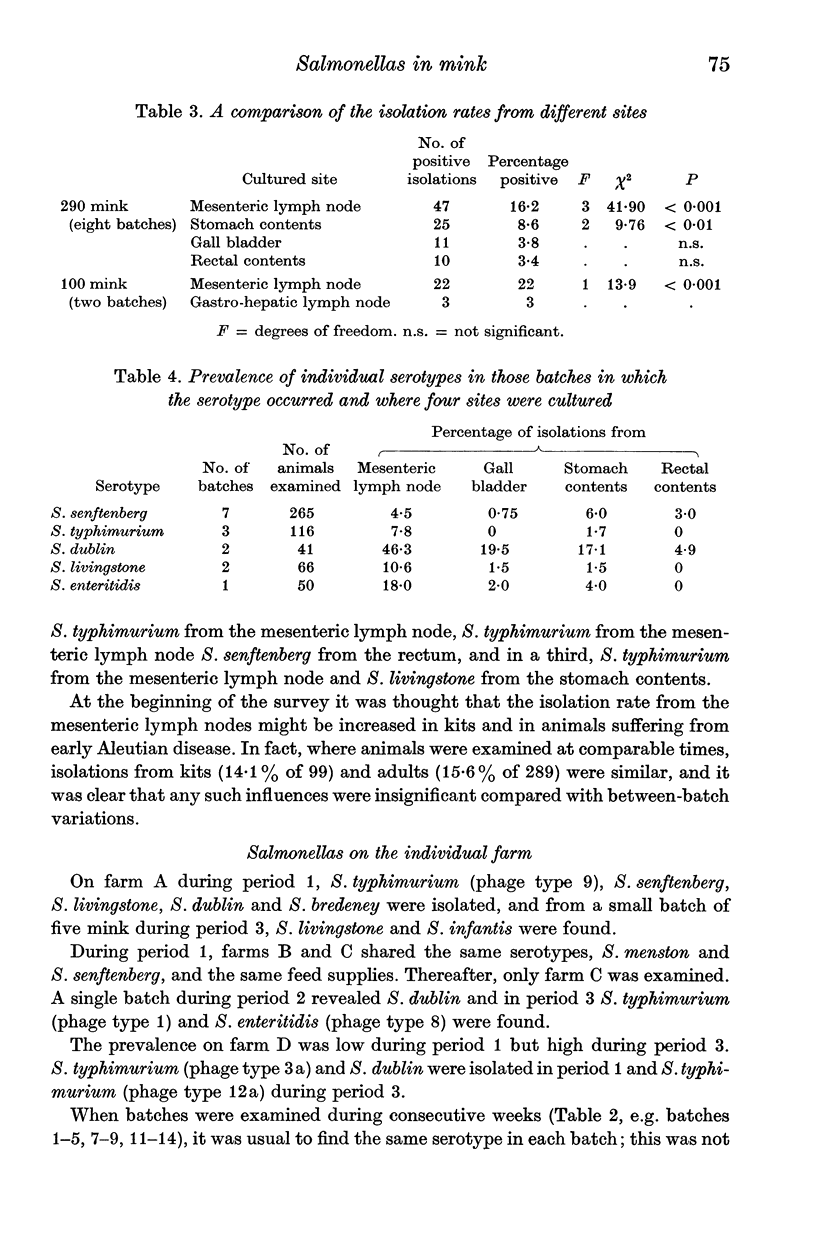
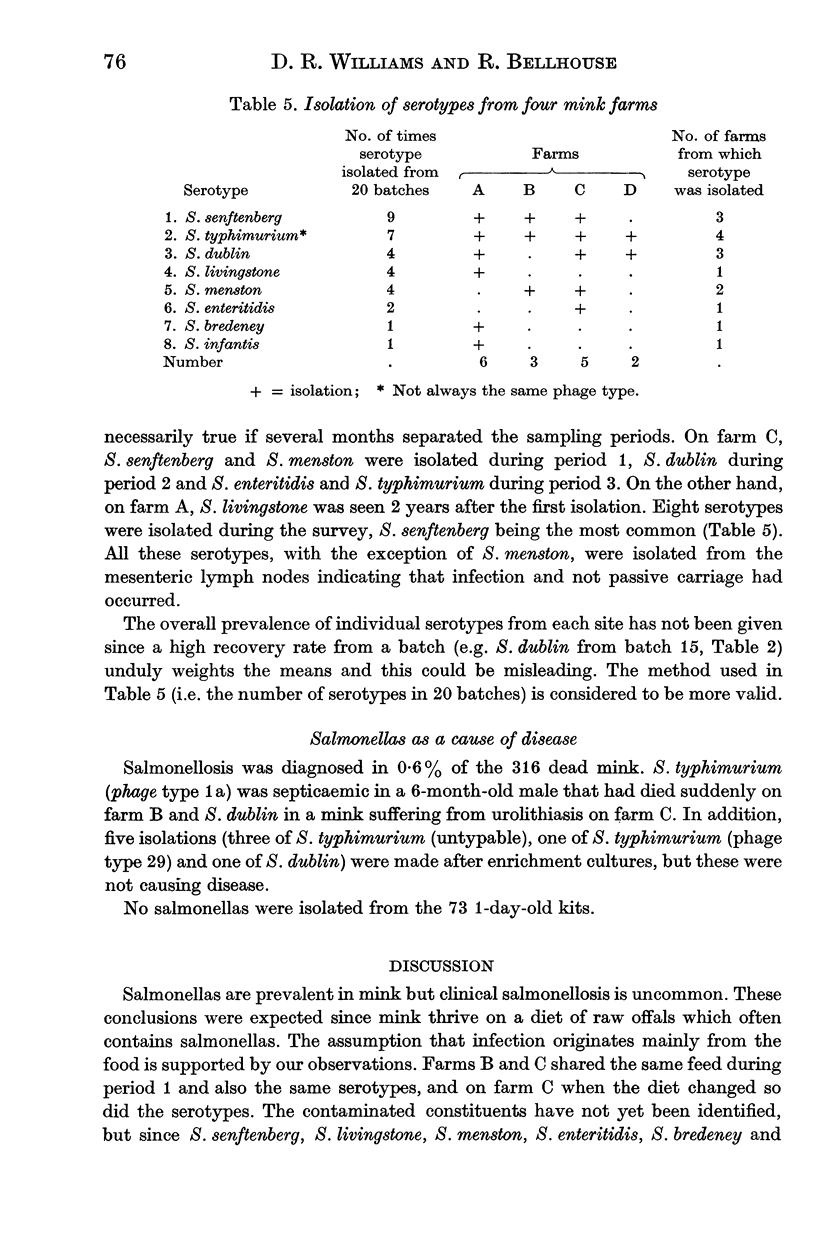


Selected References
These references are in PubMed. This may not be the complete list of references from this article.
- BIGLAND C. H., WILTON G. S., VANCE H. N., CARLSON H. C. Salmonellosis of animals in Alberta, 1949 to 1960. J Am Vet Med Assoc. 1962 Feb 1;140:251–253. [PubMed] [Google Scholar]
- Goodchild W. M., Tucker J. F. Salmonellae in British wild birds and their transfer to domestic fowl. Br Vet J. 1968 Mar;124(3):95–101. doi: 10.1016/s0007-1935(17)39502-7. [DOI] [PubMed] [Google Scholar]
- Hobbs B. C., Hugh-Jones M. E. Epidemiological studies on Salmonella senftenberg. I. Relations between animal foodstuff, animal and human isolations. J Hyg (Lond) 1969 Mar;67(1):81–88. doi: 10.1017/s0022172400041450. [DOI] [PMC free article] [PubMed] [Google Scholar]


